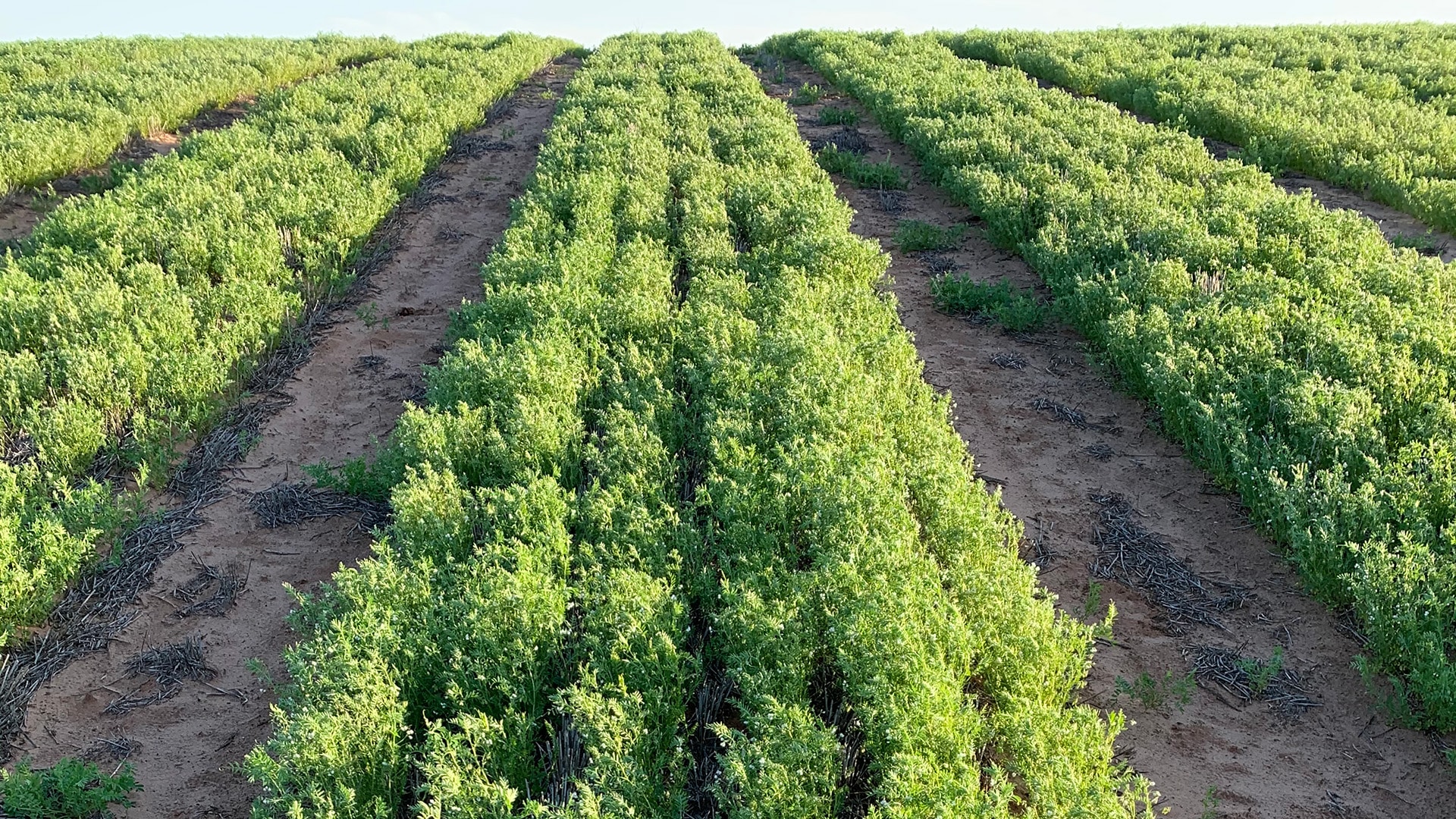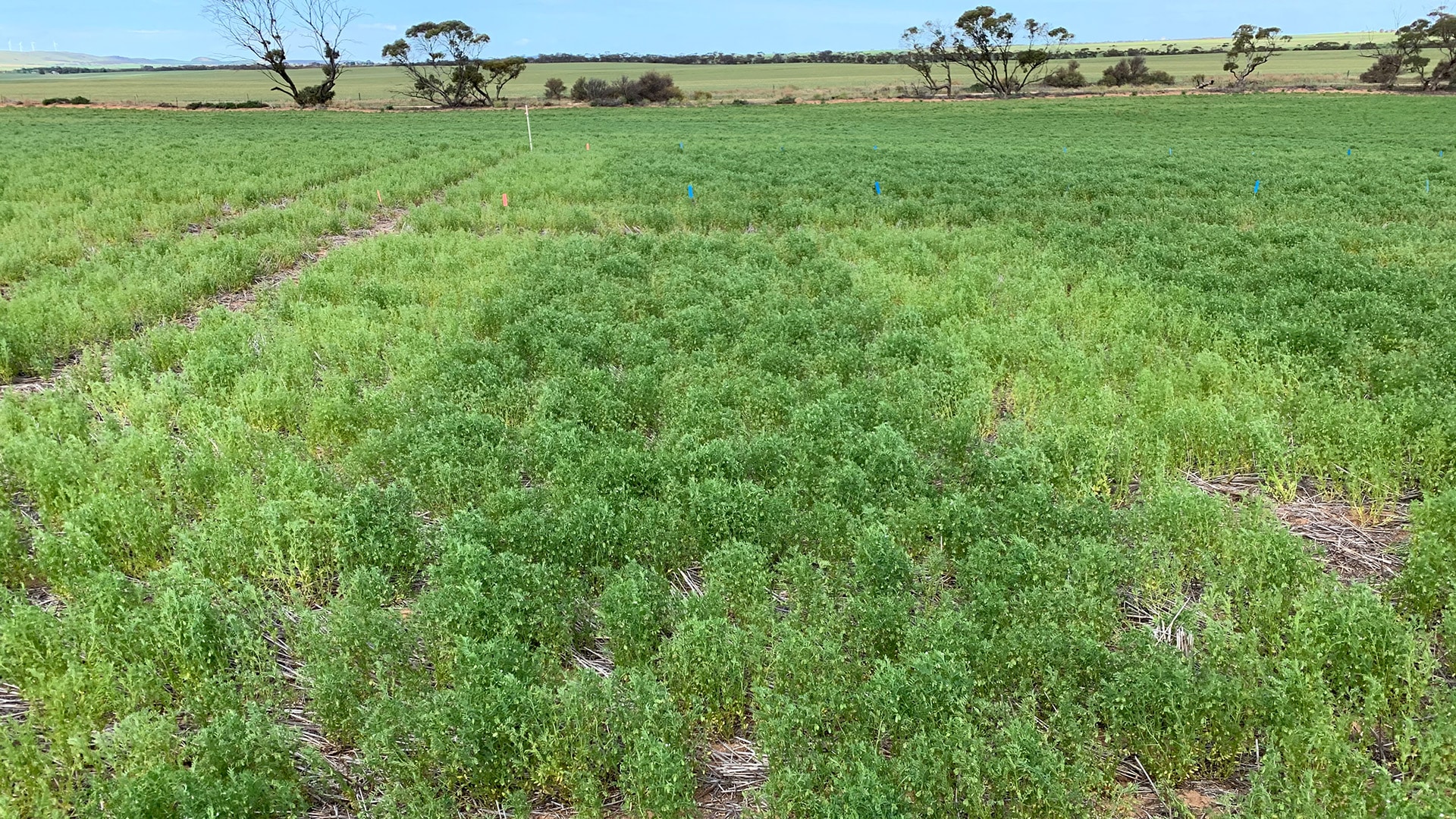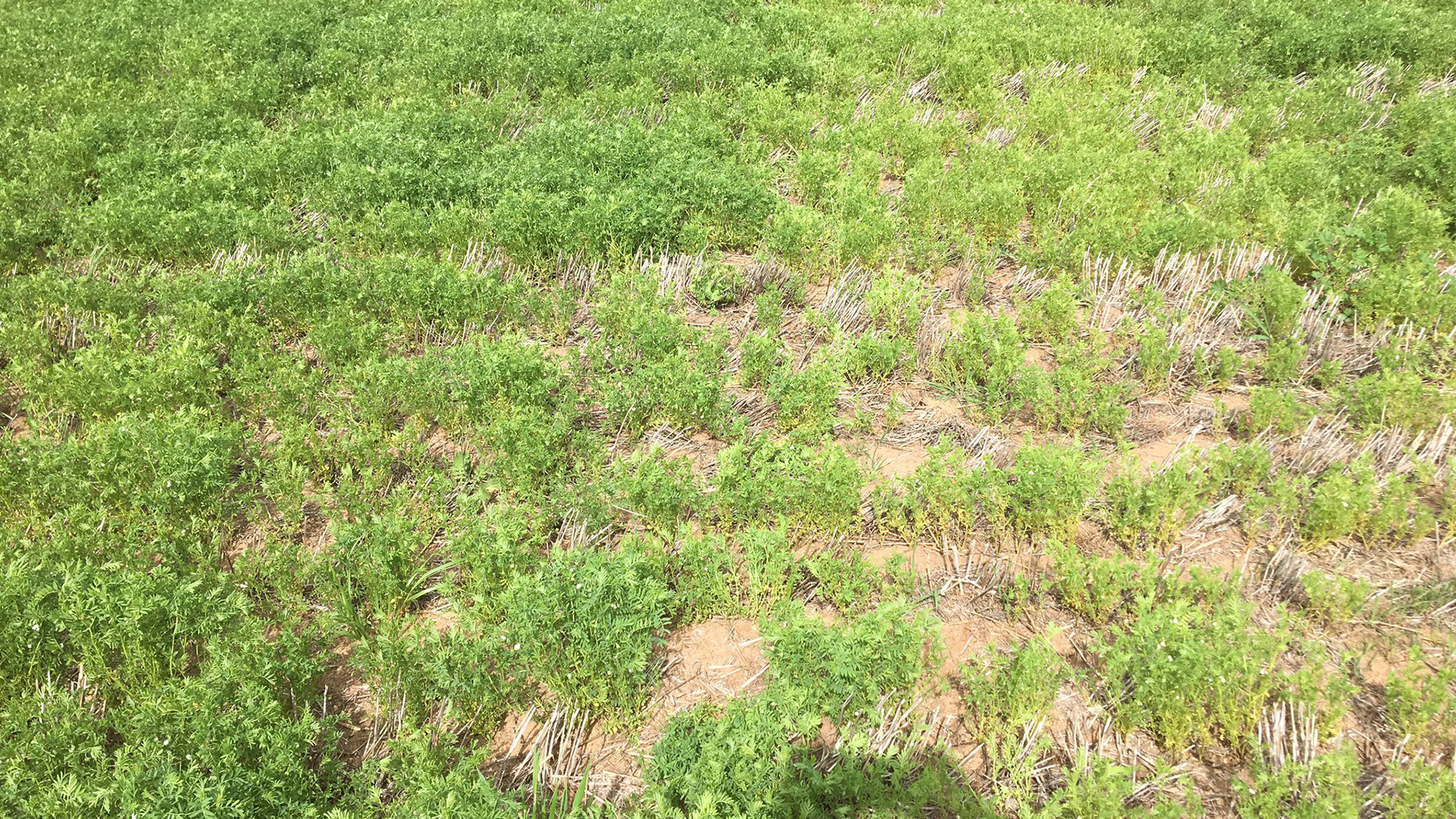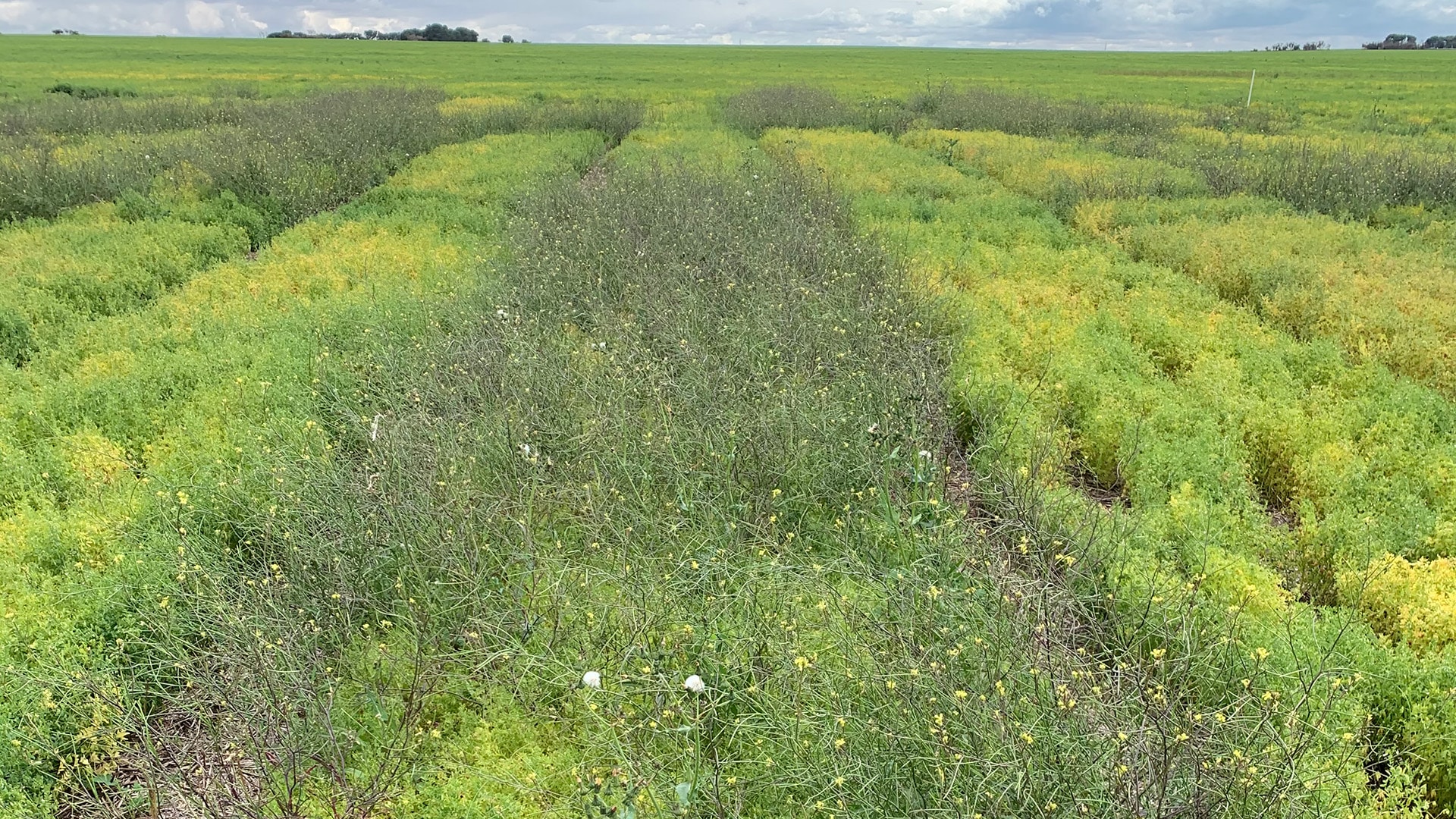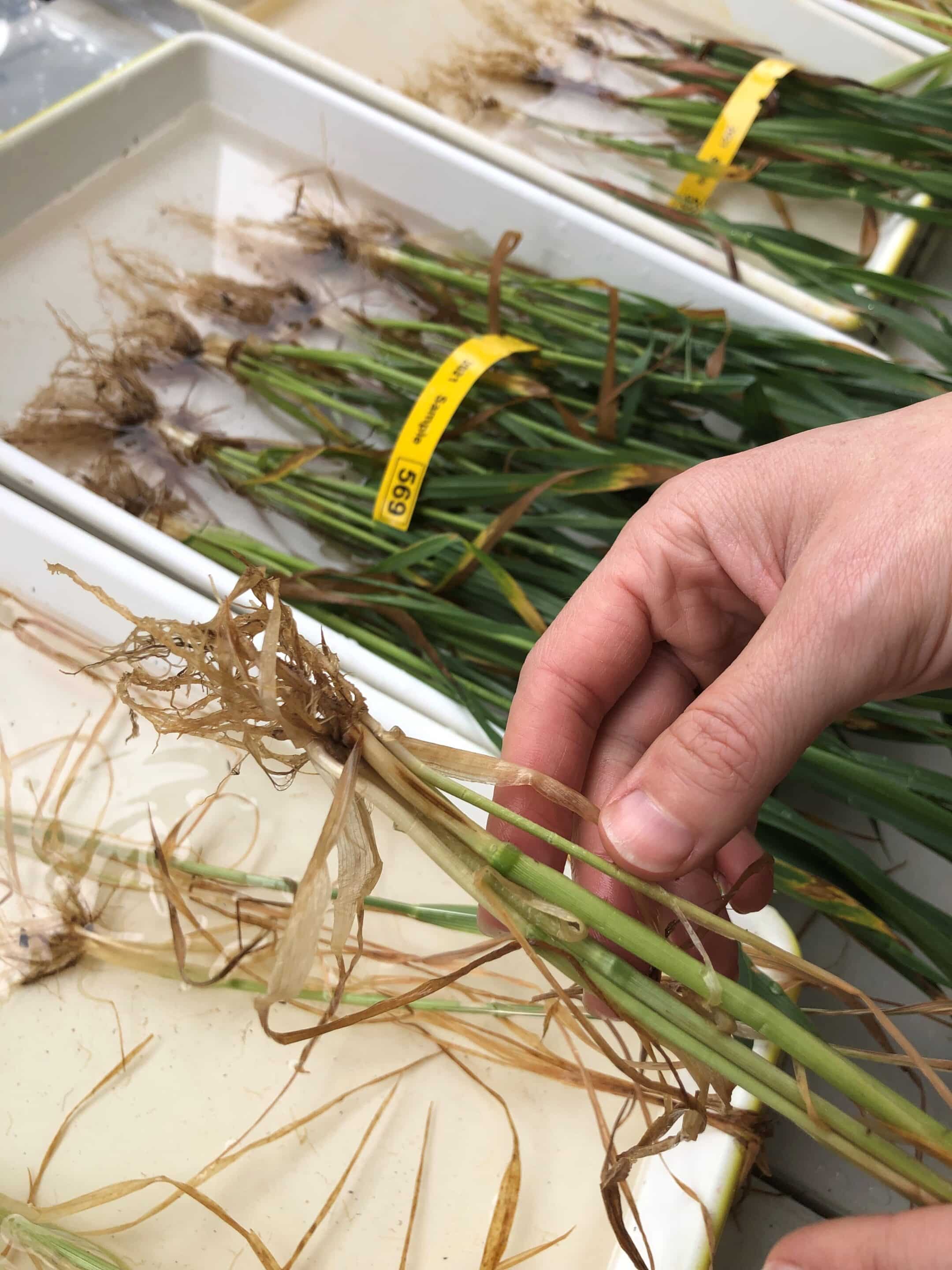START
FINISH
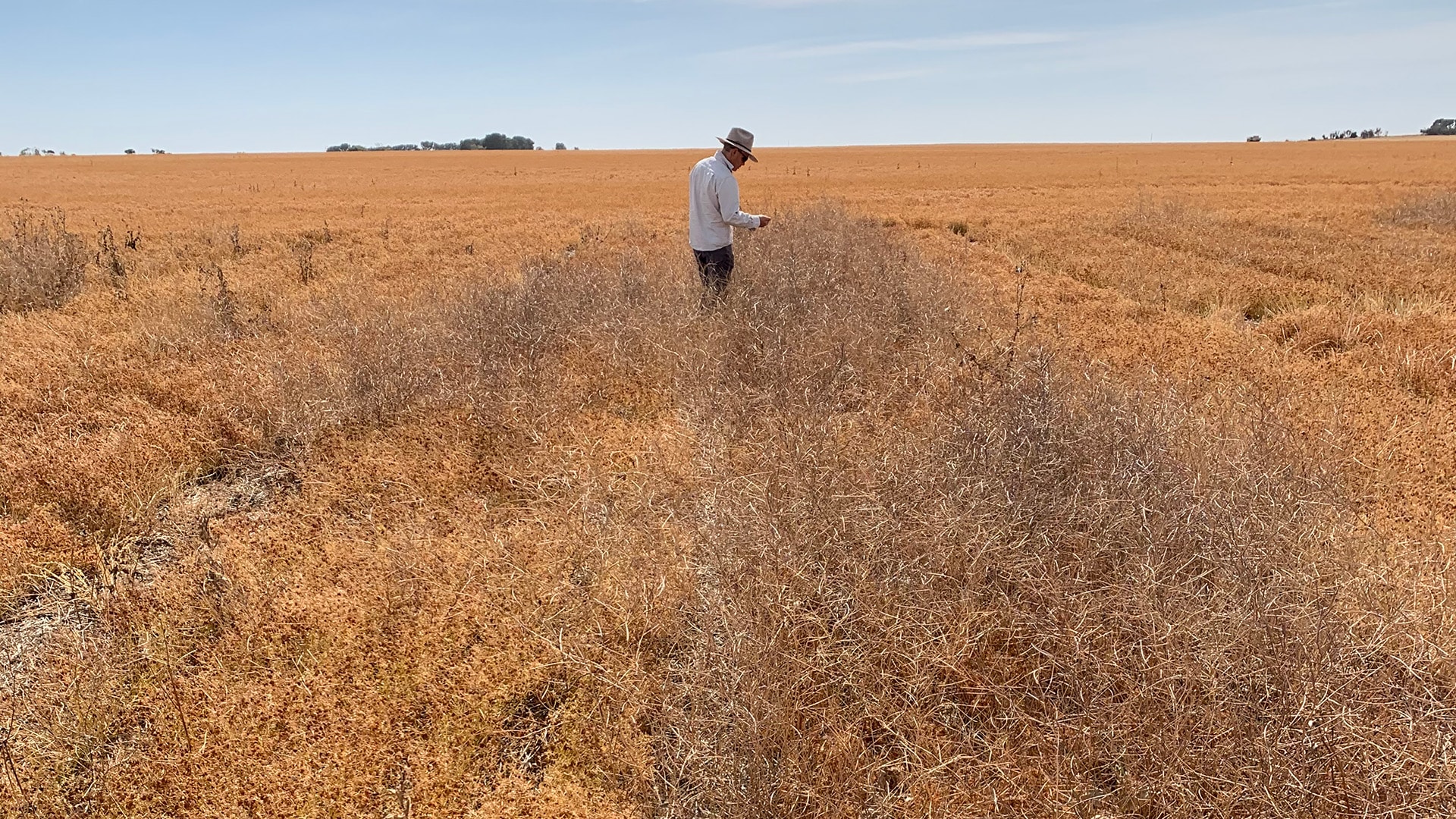
Summary
While the earlier SAGIT project TC116 investigated the impact of common soil constraints on lentil production in sandy soils on the Yorke Peninsula, it also revealed that other growth factors needed investigation – including the impacts of herbicide usage, activity and tolerances, and lentil responses to treatment of acidic sandy soils.
This current project TC119 explored the impact and management of those factors and identified strategies for improving lentil productivity on underperforming sandy soils through soil amelioration, variety selection, herbicide choice and nutrient management.
Background
Lentils are an increasingly popular and valuable crop in South Australia, with planting extending into areas with sandy soils. It has been estimated that 20 per cent of lentils in the northern YP alone are grown on sandy soils, amounting to some 4,550ha.
However, new lentil variety trials and agronomy research tends to be focussed on heavier textured soils that favour lentil productivity. Studying several important aspects of lentil agronomy on sandy soils on the northern YP provided valuable information for the increasing number of South Australian growers seeking to optimise lentil productivity on sandy soils.
Research Aims
The core objectives of the project were to:
- Assess the agronomic and economic value of new herbicide-tolerant lentil varieties.
- Further investigate best practice herbicide strategies for sandy soils, including crop safety, herbicide efficacy and losses to weed competition.
- Evaluate lentil varieties on underperforming sandy soils.
- Explore lentil responses to nutrient applications on acidic sandy soils, particularly molybdenum.
In The Field
During the 2019 and 2020 growing seasons, Trengove Consulting conducted a total of 21 lentil agronomy trials on the upper YP. These included:
- Trials to assess the agronomic and economic value of novel herbicide tolerance traits were conducted with a mix of commercially available and novel breeding lines. Herbicide tolerance and weed control for each line was assessed against incorporation by sowing and post emergent treatments of IMI, clopyralid and metribuzin herbicides.
- Investigation of best practice herbicide strategies was conducted with a wide range of Group 2 (formerly B), Group 5 (formerly C) and Group 12 (formerly F) herbicides, delivering a large dataset for lentil herbicide tolerance and safety, and control efficacy for the four main weeds infesting lentil paddocks on sandy soils in the region.
- Variety trials confirmed a positive relationship between plant biomass and grain yield that is not often observed in lentils grown on heavier textured loamy soils.
- Two nutrition trials were conducted 15/on acid sands north of Bute with omission and addition comparisons for phosphorus, sulphur, nitrogen, magnesium, molybdenum, manganese + copper, and chicken litter, all with no conclusive indications.
- Two post emergent molybdenum rate trials were conducted, where the lowest rate of 25g/ha sodium molybdate produced notable improvements in visual leaf colour, plant biomass and grain yield.
- All the trials were replicated on neutral/acidic sands at Bute and alkaline sands at Alford.
Results
This project demonstrated that soil amelioration, variety selection, herbicide choice and nutrient management can all improve lentil production on underperforming sandy soils.
Soil amelioration such as deep ripping, spading and chicken litter application increased lentil grain yields up to 347 per cent, including an average 0.31t/ha response to deep ripping.
Herbicide use must be carefully managed to minimise damage from residues persisting in sandy soils. Sandy soils with high pH may be at greater risk of crop damage from Group 2 (B) and 5 (C) herbicides incorporated before sowing.
Varieties with higher biomass production were found to yield better on sandy soils than varieties with demonstrated higher yields on heavier textured soils.
While nutrient requirements can vary across sites and season, applying molybdenum at 25g/ha on acidic sands (pH CaCl2 <6 in the top 10cm) was shown to increase grain yields in two trials.
Project Participants
Trengove Consulting: Sam Trengove, Stuart Sherriff, Jordan Bruce, Nathan Jones
Global Grain Genetics: Larn McMurray
Growers: Nathan Hewett, Bruce Bros, Brad Simpson, Paul Jarrett, James Venning, Andrew Davey
The Problem
Agronomic knowledge to optimise lentil productivity on South Australian sandy soils is still fairly limited.
The research
To better understand soil amelioration, herbicide, crop nutrition and variety selection strategies that support lentil performance on sandy soils.
More information
Sam Trengove, Trengove Consulting
T: 0428 262 047
E: [email protected]
Value for Growers
Although conducted in the Upper Yorke Peninsula area, this project has potential relevance for lentil production on sandy soils across SA, providing a productivity benefit for lentil and subsequent cereal rotations.
This research could help prevent yield losses of up to 27 per cent from weed competition and 9 per cent from residual herbicide damage. Yield increases of 0.2t/ha have been observed from applying 25g/ha sodium molybdate to even mildly acidic sandy soils. Improved lentil growth also contributed an additional 21kg/ha of nitrogen to the soil, worth an estimated $42/ha.
Latest Research Projects

